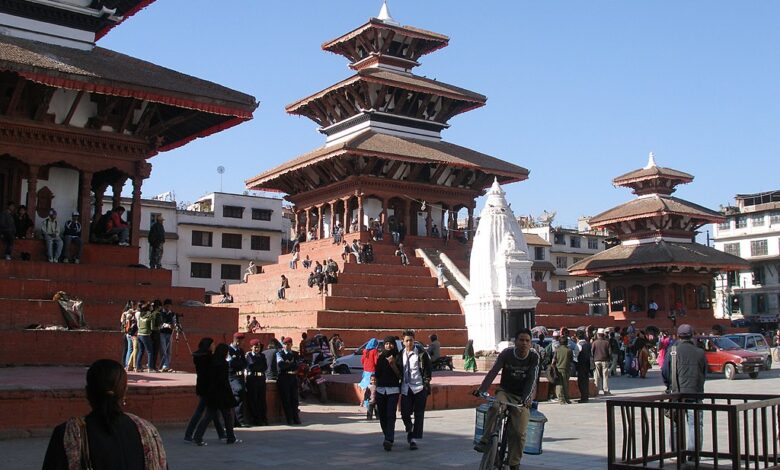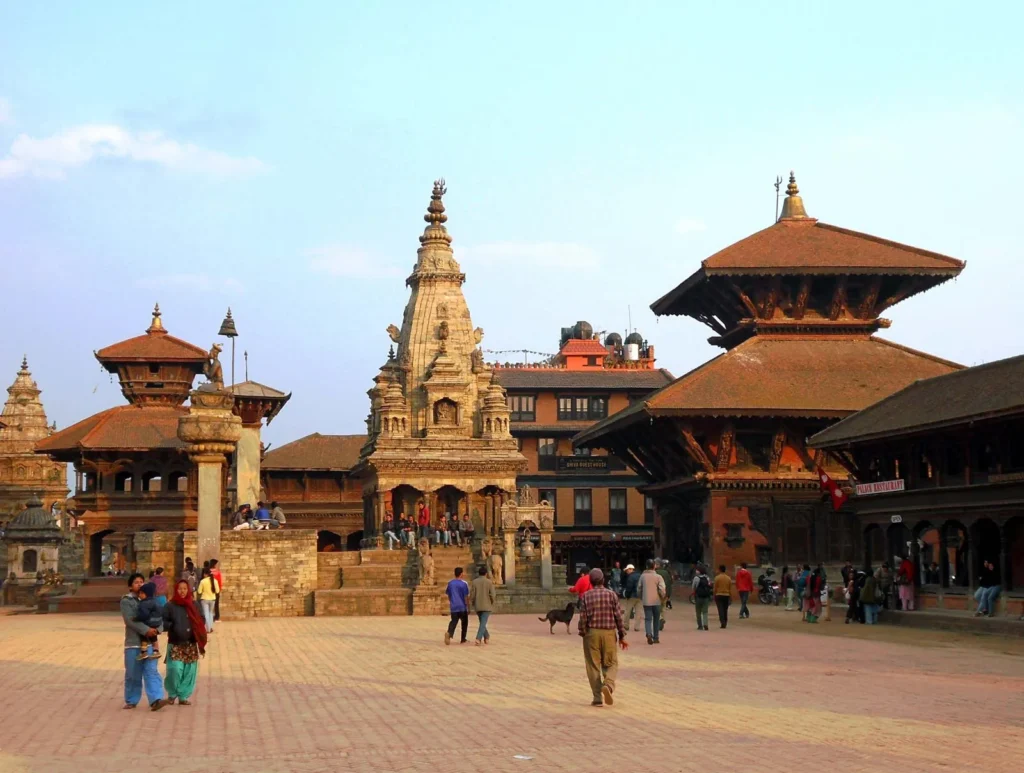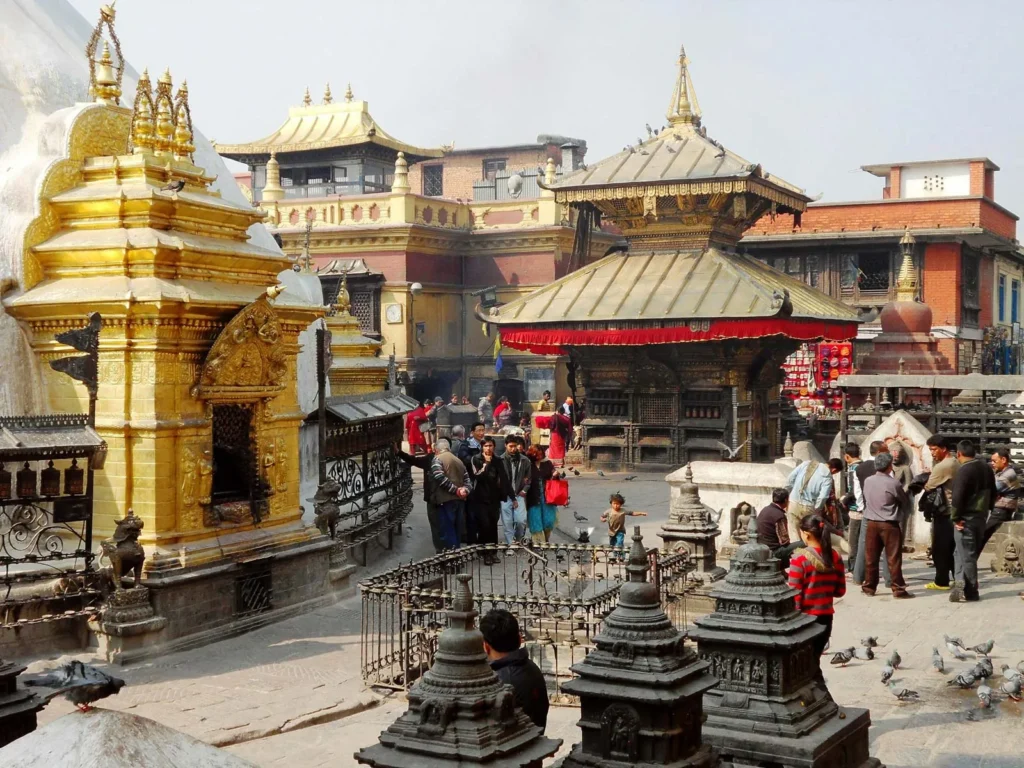Kathmandu

Kathmandu, Nepal’s capital, is set in a valley surrounded by the Himalayan mountains. At the heart of the old city’s mazelike alleys is Durbar Square, which becomes frenetic during Indra Jatra, a religious festival featuring masked dances.
This city is a place of rich history, cultural heritage, and breathtaking natural surroundings. Nestled in a hilly region near the confluence of the Baghmati and Vishnumati rivers, Kathmandu offers a unique blend of ancient traditions and modern developments. From its humble beginnings as Manju-Patan to its present-day status as the bustling heart of Nepal, Kathmandu has captivated visitors with its charm and allure. In this article, we will explore the fascinating history, vibrant culture, architectural wonders, and the impact of a devastating earthquake on this enchanting city.
A Brief History of Kathmandu
Kathmandu’s history dates back to the 8th century when it was founded by Raja Gunakamadeva. Originally known as Manju-Patan, the city gradually evolved and flourished under various rulers. In the late 16th century, Raja Lachmina Singh built a wooden temple from a single tree, giving rise to the name “Kathmandu” (kath meaning “wood” and mandir meaning “temple” or “edifice”). This temple, still standing in the central square, serves as a testament to the city’s ancient roots.
During the 18th century, Kathmandu became the capital of the ruling Shah dynasty and played a pivotal role in the unification of Nepal. The city served as the seat of power for the Gurkha people until 2008. Throughout its history, Kathmandu has been shaped by the influence of various dynasties, resulting in a diverse cultural landscape that is celebrated to this day.
Climate
Kathmandu, Nepal, experiences a diverse climate due to its varying elevations and geographical location. Under Köppen’s climate classification, lower elevations (1300-1400m) make up 88% of the city and have a humid subtropical climate (Cwa), while higher elevations generally have a subtropical highland climate (Cwb). The Kathmandu Valley, representative of the region’s climate, sees average summer temperatures ranging from 28 to 30 °C (82 to 86 °F) and average winter temperatures of 10.1 °C (50.2 °F).
The city’s climate is characterized by warm days followed by cool nights and mornings, with unpredictable weather that can drop temperatures to 1 °C (34 °F) or even lower during winter. In an extreme case in 2013, the temperature dropped to as low as −9.2 °C (15.4 °F). Rainfall is mainly monsoon-based, with about 65% of the total rainfall occurring during the monsoon months from June to September. Rainfall decreases significantly from eastern Nepal to western Nepal, with Kathmandu Valley receiving around 1,400 millimetres (55.1 in) of annual precipitation and the city of Kathmandu averaging 1,407 millimetres (55.4 in) annually. The humidity level in the city averages around 75%.
The climate chart shows minimum and maximum temperatures for each month, and the annual precipitation for 2005 was 1,124 millimetres (44.3 in). However, the decade from 2000 to 2010 witnessed highly variable and unprecedented precipitation anomalies in Kathmandu, mainly due to fluctuations in the southwest monsoon. For instance, 2001 experienced only 356 mm (14 in) of precipitation due to an unusually weak monsoon, while 2003 was the wettest year on record in Kathmandu, with over 2,900 mm (114 in) of precipitation attributed to an exceptionally strong monsoon season.
Cultural Significance and Festivals
Kathmandu is renowned for its vibrant cultural traditions and festivals. The city is home to numerous temples, shrines, and pagodas that serve as important religious and cultural landmarks. One such iconic structure is the old palace of the Malla kings, which houses the Taleju temple. This temple, built in 1549 by Raja Mahindra Malla, stands as a testament to the city’s architectural grandeur.
The people of Kathmandu celebrate a wide array of festivals throughout the year. One of the most significant festivals is Shivaratri, dedicated to Lord Shiva. During this festival, devotees gather at the Pashupatinath Temple, a UNESCO World Heritage site, to offer prayers and perform rituals. Another notable festival is the Indra Jatra, where the goddess Devi is carried in a procession, accompanied by cultural performances and religious ceremonies.
Architectural Wonders of Kathmandu

Kathmandu is a treasure trove of architectural wonders, showcasing a fusion of ancient and modern styles. The city’s two main streets offer a stark contrast to the older sectors, characterized by narrow streets and brick houses adorned with intricately carved doors and windows. The devastating earthquake of 1934 resulted in the construction of modern-style buildings, adding a contemporary touch to the city’s skyline.
One of the most prominent architectural gems in Kathmandu is the Durbar Square, a UNESCO World Heritage site. This square houses the old palace of the Malla kings, along with several pagoda-style temples. The complex also features a tall watchtower built by Bhim Sen Thapa, a former prime minister. Visitors to the Durbar Square can marvel at the intricate carvings and historical significance of these structures.
Natural Beauty and the Kathmandu Valley

Kathmandu is not only known for its cultural heritage but also for its breathtaking natural surroundings. The city is nestled in the picturesque Kathmandu Valley, which offers stunning views of lush green hills, terraced fields, and majestic mountains. The valley, designated a UNESCO World Heritage site, is a testament to the harmonious coexistence of nature and human civilization.
One of the iconic landmarks in the Kathmandu Valley is the Swayambhunath stupa. Situated on a hilltop, this Buddhist shrine is revered by Tibetan Buddhists and offers panoramic views of the city. The stupa represents the spiritual essence of Kathmandu and serves as a symbol of peace and enlightenment.
Impact of the 2015 Earthquake
On April 25, 2015, a devastating earthquake struck central Nepal, including Kathmandu. The earthquake, with a magnitude of 7.8, caused widespread destruction and loss of life. Historic buildings, including those in Kathmandu’s historic center, were severely damaged, and thousands of people were left homeless.
The resilience of the people of Kathmandu, combined with national and international efforts, has helped in the recovery and reconstruction process. Although the city faced significant challenges in the aftermath of the earthquake, concerted conservation efforts have resulted in the removal of Kathmandu from the List of World Heritage in Danger in 2007.
Future Developments and Preservation Efforts
Kathmandu continues to evolve and adapt to the demands of the modern world while preserving its rich cultural heritage. The city has become a hub of business and commerce, with new roads and improved air connectivity enhancing its importance as a national transportation center.
Efforts are underway to strike a balance between urban development and the preservation of Kathmandu’s historic landmarks. The government, along with local communities and international organizations, is actively engaged in safeguarding the city’s architectural treasures and promoting sustainable tourism.